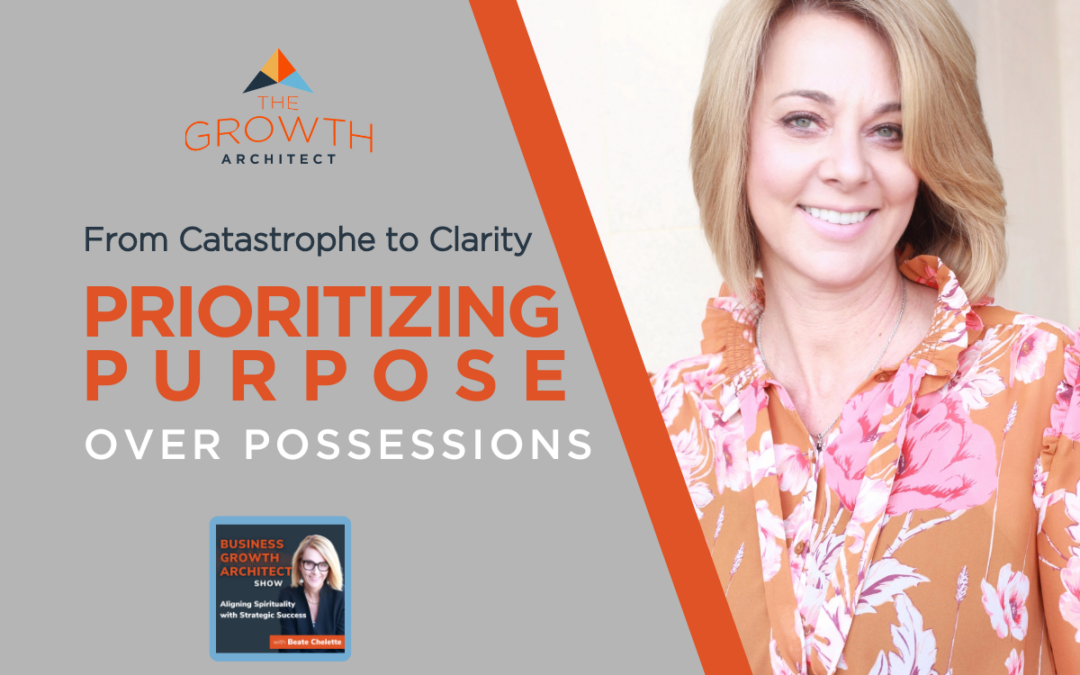There’s something deeply human about holding onto what we have. It’s mine. I earned it. I received it. It has the meaning we give it.
That’s why we often think of replacing the things we’ve lost because it’s what we know. The human condition is rooted in wanting to hold onto what’s familiar, the comfort of what we once had. When things get lost, we try to find their replicas in hopes that we can regain the comfort they once provided us. But as I’ve come to learn over the last few months, some things can’t be replaced, and some things I don’t want to replace and that realization is both painful and beautiful.
The Things We Can’t Replace
Not everything can be restored to its original state. There are memories like mothers day cards, letters from my father who passed away 20 years ago, and my grandmother’s pearls. These are items that reflect moments and people that are simply irreplaceable. No amount of shopping or decision-making can ever bring them back. A strand of pearls is now just that, they’ll never be the ones my grandmother wore.
I think of the George Hurrell original photographs that once hung above our sofa. I remember doing the homage to this great Hollywood glamour legend in my first job. How I met him in person and he drove with his old station wagon to meet me for lunch. A classic American, he ordered steak for lunch, cut everything in perfect pieces, then put his left hand on his left leg and continued to eat only with this fork. Being European this was so different to me that I had to look this up. Those were American table manners. His photographs were more than just art to me; they were part of the soul of our home. Every time I walked into the room, I was reminded of the memories attached to them — the warmth of our meeting, the stress of that first job as a photo editor. But now, those prints are gone and so is the letter he wrote me. And there is no replacement. The frames that once held those pieces of my life have vaporized along with everything else.
Then, there was the quirky painting that hung near the stairs. It was colorful, with primary colors and a cartoon cat. A simple, playful piece of art, but it held meaning because it made Baby Kayliana giggle every time I carried her downstairs and she saw it. There’s something about the way she responded to this piece of art — her unfiltered joy about “Kitty” is contagious, and it made me appreciate that painting even more. Now, it’s gone too.
Finding Familiarity in New Things
While there are some things that can never be replaced, there are others that we can — and must — restore. It’s a process of first deciding and then reclaiming what we’ve lost, one small item at a time. Sometimes, it’s the little things that make the biggest difference. Every time I ask myself, do I want to replace this? Is this something I still need. Given the opportunity to simplify my life, do I need so much stuff?
My daughter recently found my favorite Coach purse — a Raspberry Metallic beauty I had bought ten years ago at a Coach outlet in Palm Springs. It was my favorite not just because of the color (which I still think is pure perfection), but because it was a piece of me, something I’d cherished for years. She searched unbeknownst to me and found it on a reseller site. I couldn’t believe it. She bought it for me, and now, it’s being delivered. It’s funny how an item like that can bring so much joy. Now it feels like a piece of me has been restored. It’s familiar, and yet, it’s new in its own way — a link to the past, and a symbol of moving forward.
There are other things too, like the glasses we bought years ago — the thick, stained-glass water/wine glasses we loved so much. We had eight of them, and when I walked into Home Goods the other day, I couldn’t believe my eyes: there were exactly eight left. The same number we had. Gary immediately washed one to drink from, and it felt like a small but meaningful victory — a piece of our past being restored in a simple, everyday moment.
The Overwhelming Nature of Rebuilding
But even as we replace things, the process of rebuilding is overwhelming. With each decision, there’s a reminder of what we’ve lost and how much we still have to rebuild. It can feel like an endless cycle of choices, big and small, each one carrying a weight.
At first the flow of packages was like an Amazonian river, things arriving constantly— a never-ending flow of basics we needed to replace. But now, the trickle of deliveries has slowed. It’s a sign that we’re getting somewhere, but the process isn’t over. Bigger items are still on the list: skis, ski bags, hiking boots, and even steel-toe boots for me to go onto the site, something I’ve avoided because of the pain and destruction I fear encountering there. But it’s time to face it. It’s time to rebuild.
The act of rebuilding extends beyond things. It’s about my health too. It’s hard to feel the weight of loss when your body is tired, when you’re constantly crashing from exhaustion. It wears on you and booked somatic trauma release and body balancing. It would be nice to feel like myself again — to have energy most of the time, with only occasional crashes. It feels like I’m in daycare, learning new things, adjusting to the constant ebb and flow of recovery. New experiences. New words I never used before: “apocalypse,” “trauma,” “PTSD,” “rebuilding.” It’s like starting over. We’ve been burned to the ground, but we’re rebuilding — slowly, one step at a time.
Restoring the Heart
Throughout this journey, I’ve been amazed by the kindness of others. It’s easy to get lost in the overwhelming nature of it all, but then, someone comes along and offers a lifeline — a reminder that we are not alone.
Yesterday, I had a call scheduled with Aurora, a guest from my podcast. When she saw the state I was in, she said, let’s not talk about me, let me gift you a coaching session. The moment she said it, I felt my carefully constructed armor melt away, and I was overcome with emotion. I am not well. I am hurting. The adrenaline of survival has worn off, and what’s left is a tender spot that needs attention. Aurora’s kindness helped me realize something important: the wound needs to be tended to, redressed, and loved. This process of healing is not something I can rush — it requires patience, care, and attention.
Aurora also reminded me that creativity often arises in the midst of chaos. How could I have forgotten that? Creativity isn’t something that happens when life is perfect; it often emerges from pain and struggle. It’s a reminder that I don’t need to push for it. Creativity is already bubbling beneath the surface, and I have to trust in divine timing. It will come when it’s ready, and I need to let it flow naturally.
Slow Progress
We’re moving up — slowly, but steadily. There are still many areas of our lives that need attention, and the road ahead is long. But we’re not stagnant; we’re moving forward, one inch at a time.
Coming Back, Slowly
We are coming back. Slowly. But we are coming. And as we do, we’re learning to say yes again — to bike rides, to walks, and to the little things that remind us of who we are. Gary and I are healing. We may be behind, but we are moving forward. And that’s what matters.
And as this process continues there is clarity that emerges that I will continue to write about. Out of ashes the Phoenix rises. As the fire forges something else emerges. The message, the mission and the vision.
I realize more than anything that the choice is to be a victim of the fire or the blacksmith. And I don’t do victim very well.
We are coming back. Slowly. But we are coming. And as we do, we’re learning to say yes again — to bike rides, to walks, and to the little things that remind us of who we are. Gary and I are healing. We may be behind, but we are moving forward. And that’s what matters.
And as this process continues there is clarity that emerges that I will continue to write about. Out of ashes the Phoenix rises. As the fire forges something else emerges. The message, the mission and the vision.
I realize more than anything that the choice is to be a victim of the fire or the blacksmith. And I don’t do victim very well.
Let’s grow,
Beate




